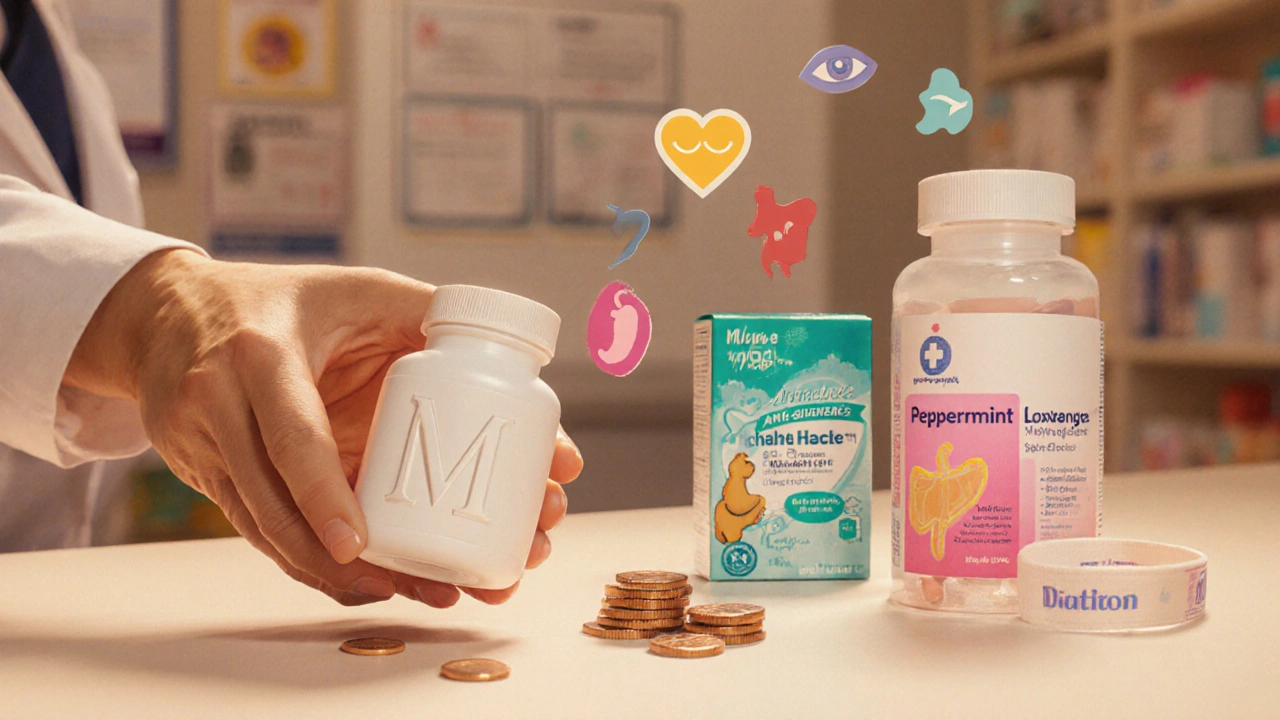
Anti-Nausea Medication Selector
Select your preferences to find the best anti-nausea medication for your needs.
1. Speed of Relief
2. Safety Profile
3. Cost Preference
Recommended Medication:
Key Takeaways
- Motilium (domperidone) is fast‑acting but can interact with heart‑meds and isn’t ideal for long‑term use.
- Motilium alternatives such as metoclopramide, ondansetron, and ginger offer different safety profiles and cost options.
- Choose based on three criteria: how quickly it stops nausea, side‑effect risk, and whether you need a prescription.
- Non‑drug strategies (diet tweaks, peppermint oil) can reduce reliance on meds for mild symptoms.
- Always check with a pharmacist or doctor before swapping drugs, especially if you have heart or psychiatric conditions.
Feeling queasy after a night out, a chemotherapy session, or a bout of gastro‑intestinal infection? You probably reached for an over‑the‑counter anti‑nausea pill or got a script for Motilium (Domperidone), the drug that blocks dopamine receptors in the gut to speed up gastric emptying. It works well for short‑term relief, but it’s not the only player on the field. This guide breaks down the most common alternatives, compares them side‑by‑side, and helps you decide which option fits your lifestyle, budget, and health status.
How Motilium (Domperidone) Works
Domperidone is a peripheral dopamine‑2 (D2) antagonist. By blocking D2 receptors in the gastrointestinal tract, it boosts motility and reduces the feeling of fullness that fuels nausea. Because it doesn’t cross the blood‑brain barrier easily, it causes fewer central nervous system side effects than some older drugs. Typical adult dosing is 10mg three times a day, taken 15minutes before meals.
Key strengths:
- Rapid onset (30‑60minutes)
- Effective for nausea caused by delayed gastric emptying
- Available in tablet and syrup forms, making it easier for children
Major limitations:
- Can prolong the QT interval, especially when combined with certain antibiotics or antifungals
- Not recommended for patients with heart rhythm disorders
- In Australia, prescription‑only for most indications
Decision‑Making Criteria
Before you swap Motilium for something else, ask yourself these three questions:
- Speed of relief: Do you need nausea to disappear within an hour, or can you wait a few hours?
- Safety profile: Are you on heart medication, antidepressants, or have a history of movement disorders?
- Access & cost: Do you prefer a prescription drug, a pharmacist‑only option, or a supplement you can buy at the supermarket?
With those answers, the comparison table below becomes a quick‑reference checklist.
| Drug / Option | Mechanism | Typical Dose | Onset | Common Side Effects | Cost (AU$) | Prescription? |
|---|---|---|---|---|---|---|
| Motilium (Domperidone) | D2 antagonist (peripheral) | 10mg 3×/day | 30‑60min | Dry mouth, QT prolongation | ~$30 for 30 tablets | Yes |
| Metoclopramide | D2 antagonist + 5‑HT4 agonist | 10‑15mg 3-4×/day | 45‑90min | Drowsiness, extrapyramidal symptoms | ~$20 for 30 tablets | Yes |
| Ondansetron | 5‑HT3 receptor antagonist | 4‑8mg PO single dose | 15‑30min | Headache, constipation | ~$45 for 10mg tablets | Yes (often chemo protocol) |
| Prochlorperazine | D2 antagonist (central) | 5‑10mg 3×/day | 30‑60min | Sedation, EPS | ~$25 for 30 tablets | Yes |
| Erythromycin (low‑dose) | Motilin receptor agonist | 125mg 3×/day | 45‑90min | GI upset, taste changes | ~$15 for 30 tablets | Yes |
| Ginger (Zingiber officinale) | Gastro‑intestinal soothing, anti‑inflammatory | 1‑2g powdered or 250mg capsule 2×/day | 1‑2h | Mild heartburn, breath odor | ~$8 for 50g powder | No |
| Peppermint Oil | Smooth‑muscle relaxant | 0.2‑0.4mL enteric‑coated capsule 2×/day | 30‑45min | Heartburn, allergic reaction | ~$12 for 30 capsules | No |

Deep Dive Into Each Alternative
Metoclopramide
Metoclopramide adds a central component to the dopamine block, stimulating the upper GI tract via 5‑HT4 receptors. It’s a go‑to for diabetic gastroparesis and postoperative nausea. The big downside is the risk of tardive dyskinesia if used beyond two weeks. If you have a history of Parkinson’s or are on antipsychotics, steer clear.
Ondansetron
Ondansetron dominates the chemotherapy and postoperative arena because it blocks serotonin in the chemoreceptor trigger zone. It’s prized for a virtually nausea‑free experience within 15 minutes. However, the price tag is higher, and insurance coverage can be a maze. It’s safe for patients with cardiac issues, but beware of constipation if you’re prone.
Prochlorperazine
Prochlorperazine is an older phenothiazine that works centrally. It’s handy for severe vertigo‑related nausea. Sedation can be helpful if you need to rest, but some people feel “spaced out.” Like other central dopamine blockers, it can trigger movement disorders, so short courses are best.
Low‑Dose Erythromycin
At 125mg, erythromycin mimics the hormone motilin, prompting the stomach to contract. It’s a useful rescue for patients who can’t tolerate dopamine antagonists. The main gripe is the bitter taste and occasional abdominal cramping. It can also interact with macrolide‑sensitive antibiotics.
Ginger
Ginger has been used for centuries to calm the stomach. Studies in 2023 showed a 30% reduction in nausea scores for motion‑sickness patients when taken as 1g powder per dose. It’s cheap, OTC, and gentle on the heart. The only caution: high doses may thin blood, so talk to your doctor if you’re on anticoagulants.
Peppermint Oil
Enteric‑coated peppermint oil relaxes the smooth muscle of the GI tract, easing nausea from indigestion. It works best after meals and is often paired with chamomile tea. Some people experience heartburn, so choose a formulation designed for the gut.
Choosing the Right Option for You
Match the drug to your situation using the three‑step matrix below:
- Fast, prescription‑level relief (under 30min): Ondansetron or Prochlorperazine.
- Gentle, non‑prescription approach: Ginger or Peppermint oil.
- Budget‑conscious, still prescription: Metoclopramide or low‑dose Erythromycin.
- Long‑term management of gastroparesis: Motilium (short bursts) combined with diet changes.
Always verify drug interactions. For instance, combining Motilium with certain antifungals (ketoconazole) can dangerously lengthen the QT interval. A quick check with your pharmacist can save a trip to the emergency department.
Practical Checklist Before Switching
- Review your current medications for heart, psychiatric, or antibiotic interactions.
- Confirm whether a prescription is required for your chosen alternative.
- Consider cost: per‑dose price, bulk discounts, and any PBS (Pharmaceutical Benefits Scheme) subsidies.
- Test a single dose of the new option on a low‑risk day (e.g., no heavy meals) to gauge tolerance.
- Document effectiveness: time to relief, any side effects, and whether nausea recurs.
When to Seek Professional Help
If nausea persists beyond 48hours, you notice vomiting blood, experience severe abdominal pain, or develop a rapid heartbeat, call your GP or head to the nearest emergency department. These signs can indicate ulcers, bowel obstruction, or cardiac issues that need immediate attention.
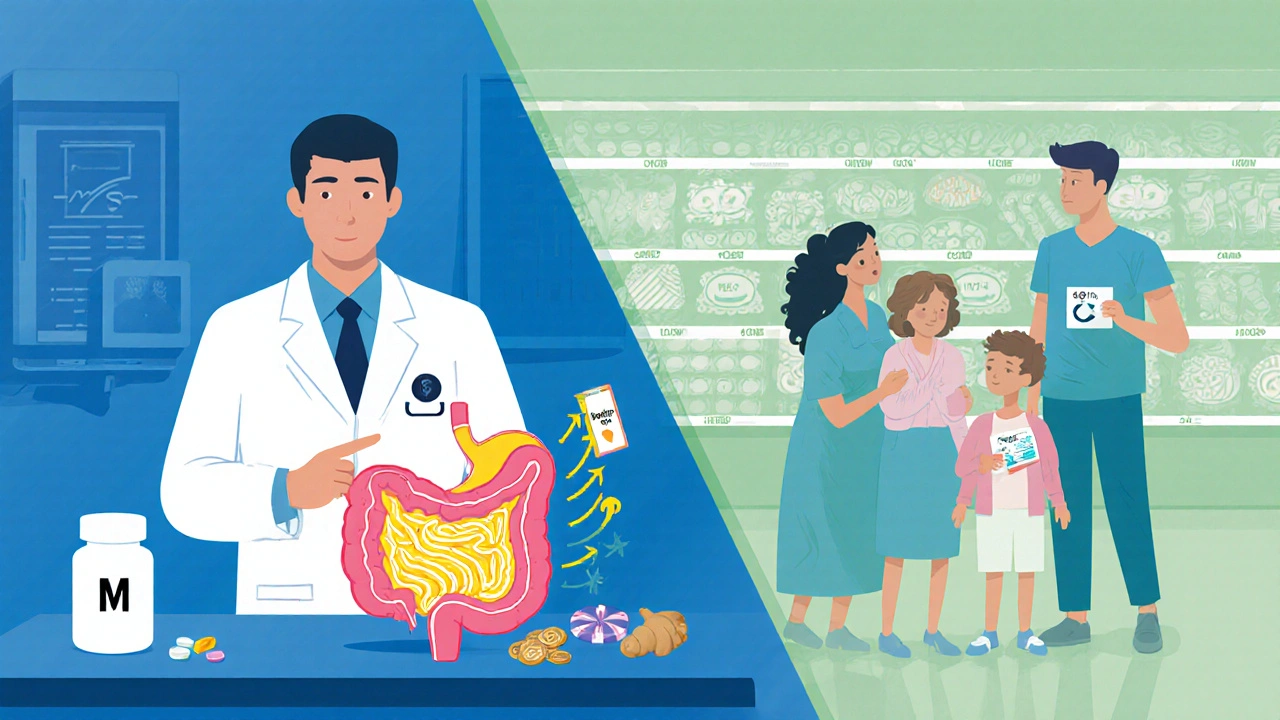
Frequently Asked Questions
Can I take Motilium and ondansetron together?
Generally no. Both target nausea but via different pathways, and stacking them can increase the risk of side effects like constipation or QT prolongation. Talk to a pharmacist before combining them.
Is ginger as effective as prescription meds?
For mild to moderate nausea (motion sickness, early pregnancy), ginger can match the relief level of low‑dose Metoclopramide. It won’t work as fast as Ondansetron for severe chemo‑induced nausea, but it’s a safe, low‑cost alternative.
What are the biggest drug interactions with Domperidone?
CYP3A4 inhibitors (ketoconazole, erythromycin, clarithromycin) raise blood levels and can trigger cardiac arrhythmias. Also avoid concurrent use with other QT‑prolonging drugs like certain antipsychotics or antiarrhythmics.
Can I use peppermint oil if I have acid reflux?
Enteric‑coated peppermint oil is less likely to aggravate reflux, but some people still feel heartburn. Start with a half capsule and see how you react.
How long is it safe to stay on Metoclopramide?
Most guidelines limit continuous use to 2-4 weeks to avoid tardive dyskinesia. If you need longer relief, discuss rotating to a motilin agonist like low‑dose erythromycin.

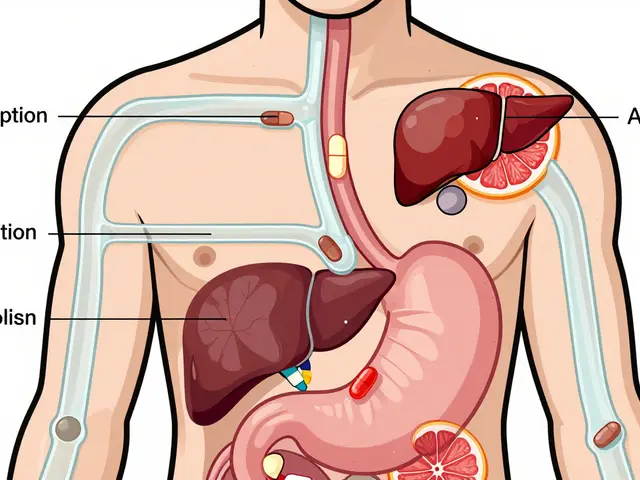
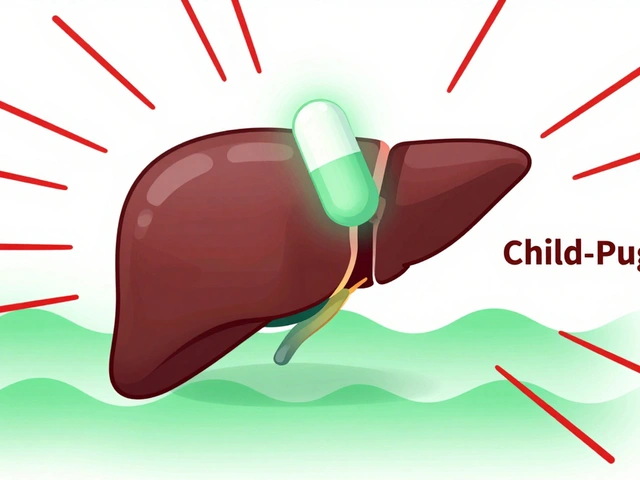
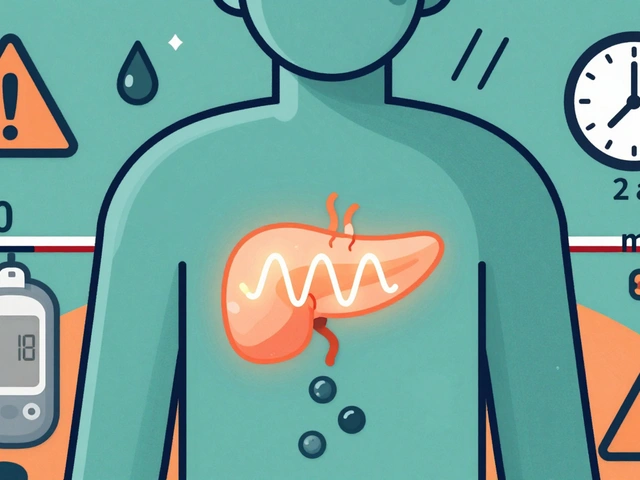
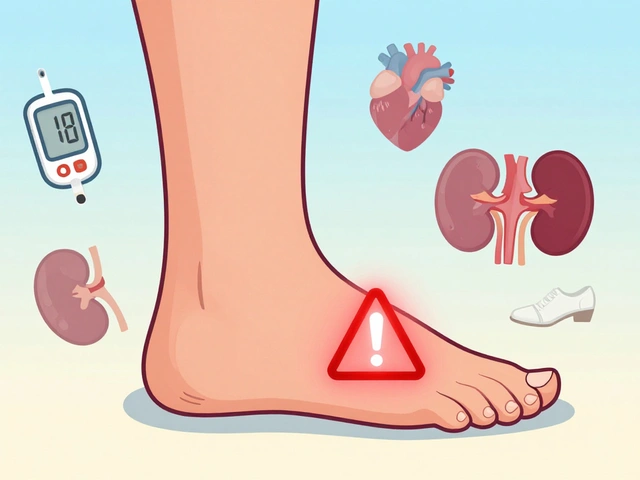

5 Comments
If you’re looking for quick relief, the onset time really matters. The table shows that Motilium and Ondansetron can start working within half an hour, which is a big win after a night of heavy drinking or a bout of food poisoning. For many folks the speed of action beats the fine‑tuned safety profile, especially when the nausea is intense and you need to get back to daily tasks. Just remember to double‑check any heart‑related warnings before you pop a dose, because the QT interval can be a sneaky side effect. A short course of Motilium is usually fine, but don’t make it a habit without a doc’s okay. If you have any cardiac meds, ginger or peppermint oil become the safer go‑to while you sort out the prescription situation. Overall, matching the drug to your urgency, health background, and wallet is the smartest move.
It’s fascinating how the pharmaceutical giants push drugs like Motilium while keeping the scary cardiac risks buried in the fine print. They profit from our discomfort, packaging convenience over caution, and then the whole safety disclaimer gets lost in the sea of marketing hype. When you read about QT prolongation, you have to wonder why the same companies aren’t louder about alternatives that cost less and pose fewer hidden dangers. Ethical medicine should prioritize transparency, not just sales. The fact that ginger and peppermint oil can hold their own against a pricey prescription is a clear signal that natural options are being undermined. Consumers deserve to know that the cheapest, safest route often lies outside the pill bottle.
Ginger is a solid, low‑cost option for mild nausea.
When we step back and view the therapeutic landscape through a systems‑level lens, several interlocking variables emerge that guide optimal choice. First, the pharmacodynamic profile dictates how swiftly the drug can modulate gastrointestinal motility; domperidone’s peripheral D2 antagonism provides a rapid response without central side effects, yet it brings a dose‑dependent QT interval concern that must be weighed against patient-specific cardiac risk factors. Second, the metabolic pathway, particularly CYP3A4 involvement, creates a network of potential drug‑drug interactions, making low‑dose erythromycin or metoclopramide less attractive in polypharmacy contexts. Third, the cost‑benefit axis cannot be ignored – although ondansetron offers the fastest onset, its premium pricing often restricts accessibility, pushing many patients toward generic equivalents or herbal adjuncts. Fourth, patient adherence hinges on formulation convenience; liquid syrup of domperidone is child‑friendly, whereas enteric‑coated peppermint capsules simplify dosing for adults who dislike bitter tastes. Fifth, cultural acceptability plays a subtle role; communities with strong culinary traditions may readily adopt ginger or peppermint, integrating them into daily diets with minimal stigma. Finally, long‑term safety mandates periodic ECG monitoring for any QT‑prolonging agent, while the benign side‑effect profile of ginger aligns with anticoagulant therapy, provided doses stay within recommended limits. By synthesizing these dimensions – pharmacology, interaction potential, economics, formulation, cultural fit, and monitoring requirements – clinicians can construct a patient‑centred algorithm that tailors anti‑nausea therapy to individual risk‑reward calculations, ensuring both efficacy and safety are maximized.
The hype machine around prescription anti‑nausea pills feels like a staged performance, and anyone paying full price for Motilium without questioning the hidden cardiac agenda is missing the point. Real relief can come from a humble ginger root or a peppermint capsule, yet the pharma lobby keeps us locked into a cycle of costly scripts and endless refill reminders. It’s almost theatrical how the side‑effect warnings are tucked away like footnotes, while the marketing blitz screams about ‘fast relief’. If we stop feeding that narrative, we can reclaim control over our own gut health and break free from the perpetual dependency loop they’ve engineered. The truth is out there, waiting for us to read between the lines and choose wisely.